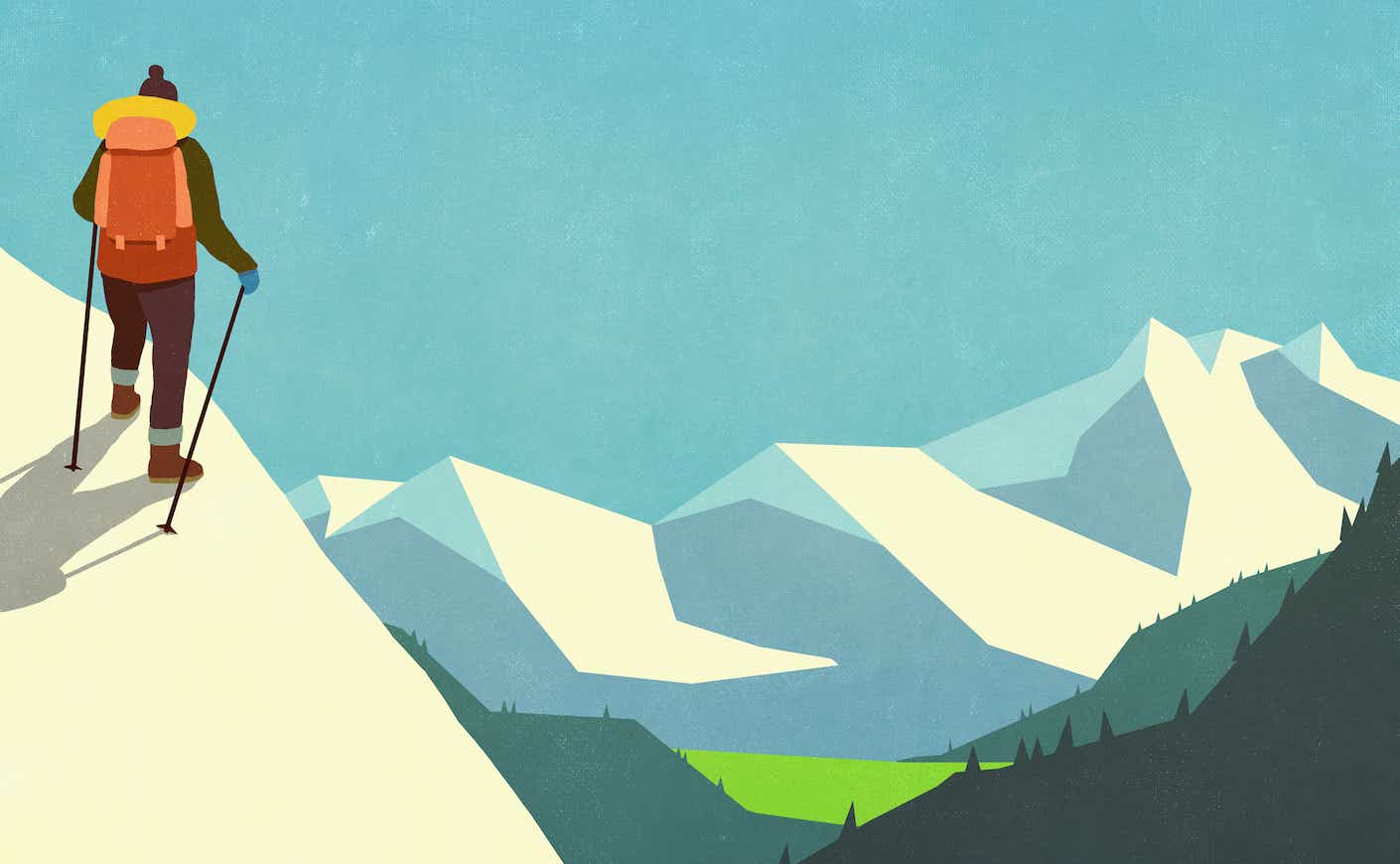Sabbaticals aren’t just for professors and priests: Here’s how a leave of absence changed three employees’ lives.
In 2015, Maria Belen Silvestris, then 25 years old, took a trip to China and Tibet. When she saw Mount Everest in the distance, she had a revelation that would change her life: “I looked up at the mountain and thought to myself, I’m going to climb that.”
Silvestris didn’t know it yet, but she would end up making that dream happen, thanks in part to a sabbatical. In case you’re not familiar, that’s defined as a leave of absence from work — either paid or unpaid — that lasts anywhere from one to three months. And at the end of a sabbatical, employees return to the same role at their company. As of 2018, 24% of small businesses and 14% of large businesses in the U.S. allow their employees to take this type of leave. Sabbaticals offer employees the opportunity to travel, pursue personal passions, or take a mental health break. But they can be good for companies, too: Offering voluntary unpaid sabbatical leave can help companies retain top talent and prevent burnout. Employees may use this time as a reset, so they return to work reinvigorated and ready to contribute.
Silvestris, Brazil CMO and Senior Director Fabric & Home Care at Procter & Gamble, experienced the power of a well-timed sabbatical while pursuing her own passion. She had no climbing experience before her 2015 revelation about Everest, but over the next nine years she became a professional climber, using all of her vacation days to hike some of the most difficult mountains in the world. “I always say I have two jobs,” says Silvestris, “My job at P&G, and my job climbing mountains.”
In May of this year, Silvestris took a two-month sabbatical to climb Everest, her final climb of the highest mountain on each continent, known as the seven summits. “My entire team at P&G was very supportive,” she recalls. “They knew this was something I had to do, and they were all rooting for me.”

Silvestris’s experience on Everest was life-changing, but also harrowing: While on the mountain, Silvestris was standing alongside other climbers on a small platform when it was hit by a falling snow ledge. The platform collapsed, and six climbers, including Silvestris, fell through the crevasse. Tethered by a rope, she was pulled to safety, but two climbers lost their lives.
Stunned by the sudden tragedy, Silvestris was in shock, but had a realization: “I cannot let this define my experience here,” she recalls telling herself. “I’m only an hour from the summit. I promised myself I would finish this.” Silvestris continued up the mountain, eventually reaching the summit. “We were all hugging and crying,” she recalls. “We had been so close to death, but we lived. There was shock, relief, grief, and joy all at once. It was intense.” Now, at age 35, Silvestris is the youngest woman from South America to complete all seven summits.
People take sabbaticals for all kinds of reasons, from travel to self-discovery — for Sammy Wang, a Senior Engineer at P&G, the impetus was both. The child of Taiwanese immigrants, Wang was born and raised in Nebraska: “My parents tried to teach me the language and culture, but as a kid, I rejected a lot of it in order to fit in.”
Wang was in her 30s and living alone in the Midwest when the pandemic hit; what she experienced shifted her mindset around her identity. “As an Asian American during Covid, I felt animosity toward me,” she says. “People would yell at me on the street. I’d spent my whole life acting like I could hide the Asian part of me, but I realized then that when people look at me, they don’t necessarily see a Nebraskan, or even an American.”
Wang realized she needed to visit the country where her parents grew up. “I was young, I wasn’t married, I didn’t have kids, and I had this new interest in embracing my heritage. It was the right time for me to take a trip there.” With support from P&G, Wang took a three-month unpaid sabbatical to Taipei, Taiwan. She took language lessons, immersed herself in the local culture, and connected with family members. “I had the chance to embrace a part of myself I’d spent so many years rejecting,” she says. “I spent Chinese New Year with my family, and I learned about Eastern practices for well-being that were entirely new to me.” The time away also provided Wang with a new perspective regarding work-life balance: “I love my job and it’s a big part of my identity, but at times it was all-encompassing. Stepping away for a time made me realize that life is short, and it’s OK to give myself some grace. The experience also made me appreciate my job more than I had before.”

Amanda Lutz, who works in North America Employee Relations at P&G, is responsible for the company’s policies surrounding employee sabbatical leave. It’s a role Lutz has a personal connection to: She took a two-month sabbatical in 2018. “It had been a challenging year for me,” Lutz recalls. “My son had had a tough year at school, and I was feeling burnt out at work. We both needed a reset. So that summer, we took a road trip together across the country.” On their trip, Lutz and her husband and son visited national parks, and stayed with friends and family they hadn’t spent time with in years. Each day was a spontaneous adventure: They didn’t have a set schedule, and didn’t book hotels ahead of time. “There were certainly times on the trip my son was frustrated,” Lutz laughs. “But he’ll tell you now that it was the best summer of his life.”

Before considering a sabbatical, Lutz says there are some crucial considerations to make and plan for. “Ask as many questions as you can beforehand, both of yourself and of your employer. Know your company’s expectations and requirements, and give yourself a lot of time to financially prepare. Most sabbaticals are unpaid,” she continues, “but you still receive and pay for insurance coverage, so you’ll need to budget accordingly. And make sure you’re armed with a plan for how your work can be covered while you’re away — we require six months’ notice to give a team ample time to prepare for a coworker’s absence.” If you do decide to take a sabbatical, Wang suggests giving yourself a cushion of time to help ease back into the job: “If you’re traveling, plan to take an additional week off after you get back, so returning to work doesn’t feel like a shock.”
If your company already has a sabbatical policy in place, Lutz suggests making sure you’re aware of the rules before putting in a request: “At P&G, sabbatical leave is unpaid and granted for a minimum of one month and a maximum of three months. If you want to take something longer than that, you could consider tacking on your vacation days, if your manager will allow it.”
If your company doesn’t have a set precedent for sabbatical leave, Lutz suggests one compelling argument to make to your employer: “This perk creates company loyalty and alleviates burnout. People come back refreshed and thankful for the time off, and they’re ready to put in the work.” Silvestris adds that her sabbatical taught her crucial skills she was able to bring back to the workplace, and ultimately made her a better employee: “I’m a different person than I was before I climbed that mountain,” she says. “I’m stronger. I’m more confident. In the past, I might get nervous before meetings. But now I say to myself, You survived Everest. Nothing scares me anymore.”












